жӮЁеҘҪпјҢзҷ»еҪ•еҗҺжүҚиғҪдёӢи®ўеҚ•е“ҰпјҒ
и“қзүҷжЁЎеқ—жһ¶жһ„иҜҰи§Јпјҡhttps://blog.csdn.net/tronteng/article/details/53435217
и“қзүҷиҝһжҺҘиҝҮзЁӢеҲҶжһҗпјҡhttp://mcu.szdahao.com/info/info_218.html
з”ұдәҺе…¬еҸёжғіиҠӮзәҰжҲҗжң¬пјҢе°Ҷи“қзүҷзӣ’еӯҗзҡ„еҠҹиғҪз”ұandroidжқҘе®һзҺ°пјҢдҪҶжҳҜеҸ‘зҺ°androidе№ҝж’ӯеҢ…зҡ„ж•°жҚ®зҡ„жӢјз»„йЎәеәҸдёҺи“қзүҷзӣ’еӯҗзҡ„дёҚдёҖиҮҙгҖӮжүҖд»ҘйңҖиҰҒзңӢзңӢжәҗз ҒжҳҜеҰӮдҪ•з»„еҢ…зҡ„пјҢжҳҜеҗҰеҸҜд»ҘеҺ»дҝ®ж”№гҖӮ
ејҖеҗҜе№ҝж’ӯзҡ„жәҗз Ғ
гҖӢгҖӢжіЁеҶҢе®ўжҲ·з«Ҝ

пҪң
AdvertiseCallbackWrapperжҳҜBluetoothAdvertiserзҡ„еҶ…йғЁзұ»
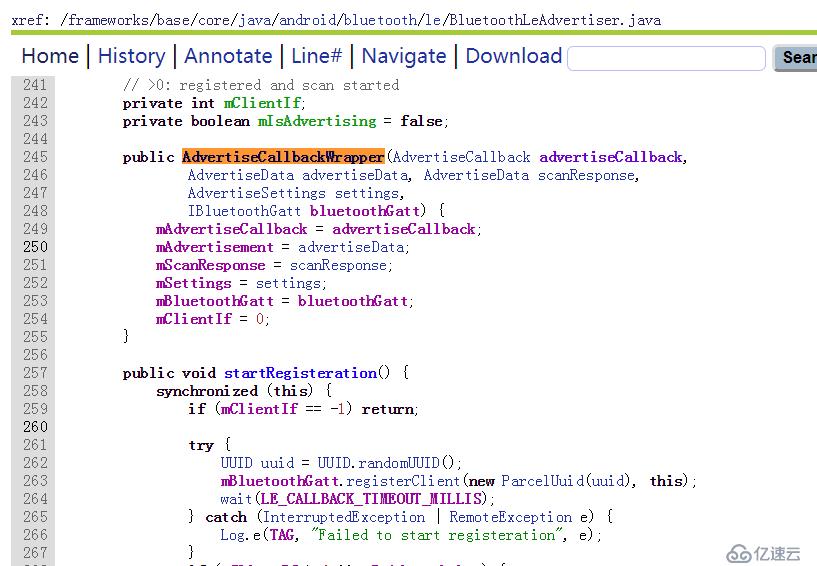
пҪң
дёҠйқўзҡ„mBluetoothGattе…¶е®һе°ұжҳҜGattServiceзҡ„BluetoothGattBinderеҜ№иұЎпјҢдҪҶжҳҜжіЁж„Ҹе№ҝж’ӯзҡ„ж•°жҚ®advertiseData并没жңүеҫҖдёӢдј йҖ’гҖӮ
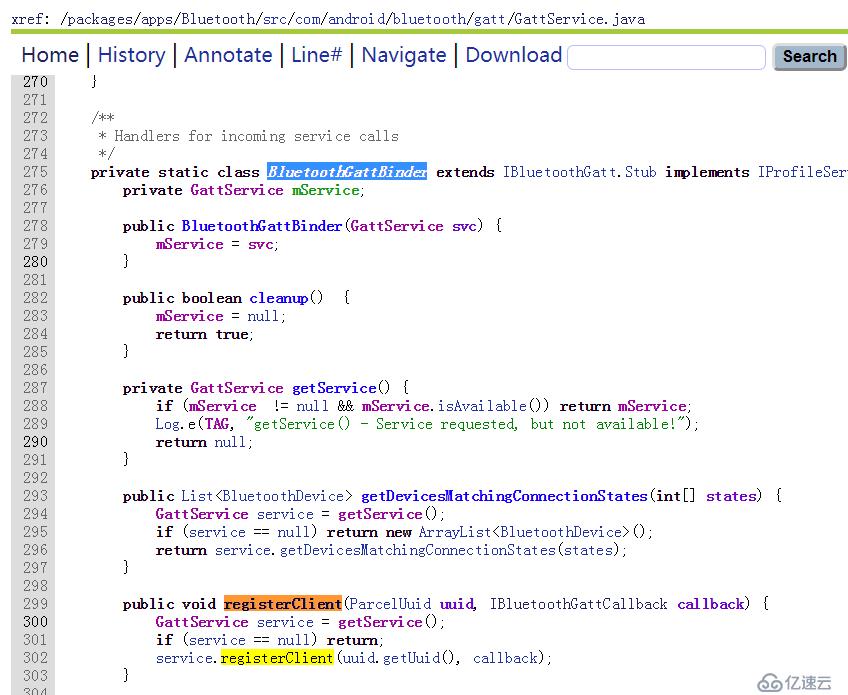
пҪң
BinderеҸҲи°ғз”ЁдәҶеӨ–йғЁзұ»GattServiceзҡ„ж–№жі•
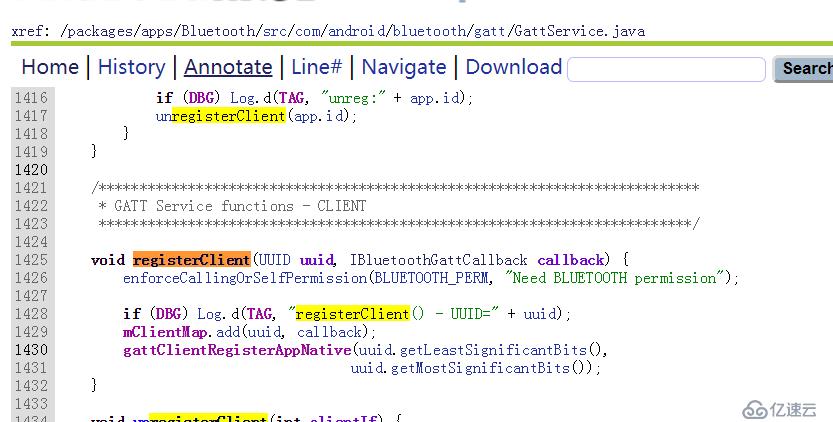
然еҗҺи°ғз”ЁдәҶNativeзҡ„ж–№жі•пјҢи°ғз”ЁеҲ°иҝҷйҮҢзӘҒ然еҸ‘зҺ°TMDзҡ„е№ҝж’ӯеҢ…ж•°жҚ®жІЎжңүдј йҖ’иҝҮжқҘгҖӮжүҖд»ҘеҫҖеӣһзңӢпјҢжҗңзҙўе№ҝж’ӯеҢ…еӯҳеӮЁзҡ„еҸҳйҮҸmAdertisment.
гҖӢгҖӢе®ўжҲ·з«ҜжіЁеҶҢжҲҗеҠҹпјҢзңҹжӯЈзҡ„ејҖеҗҜе№ҝж’ӯ
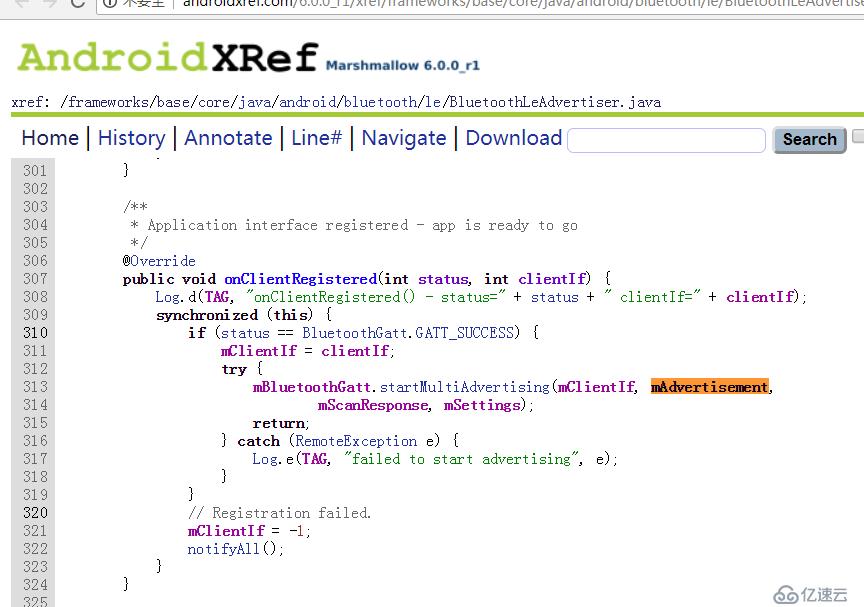
е…Ҳи°ғз”Ёbinderзҡ„ж–№жі•startMultiAdvertising
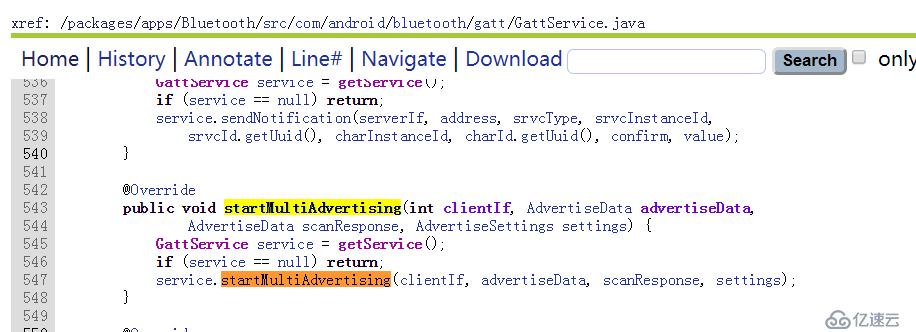
然еҗҺbinderеҶҚи°ғз”ЁserviceйҮҢзҡ„ж–№жі•

еҸҜд»ҘзңӢеҲ°е№ҝж’ӯзҡ„ж•°жҚ®иў«е°ҒиҝӣдәҶAdvertiseClientеҜ№иұЎ
service然еҗҺеҶҚи°ғз”ЁAdvertiseManagerзҡ„ж–№жі•
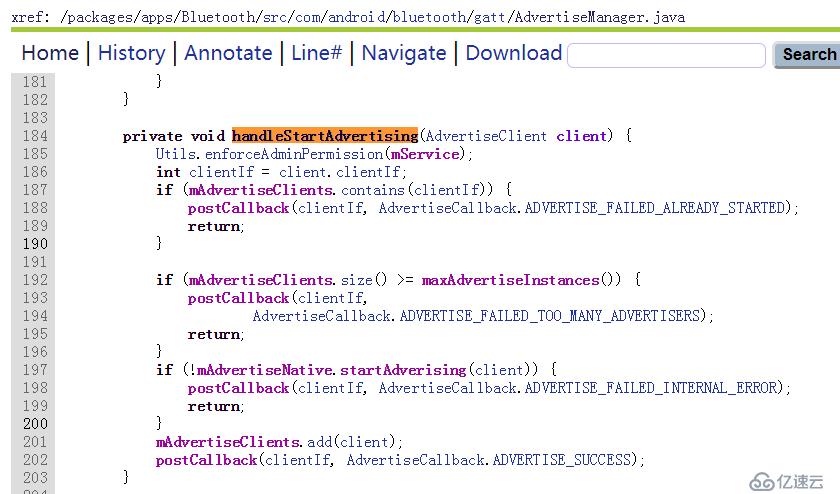
пҪң
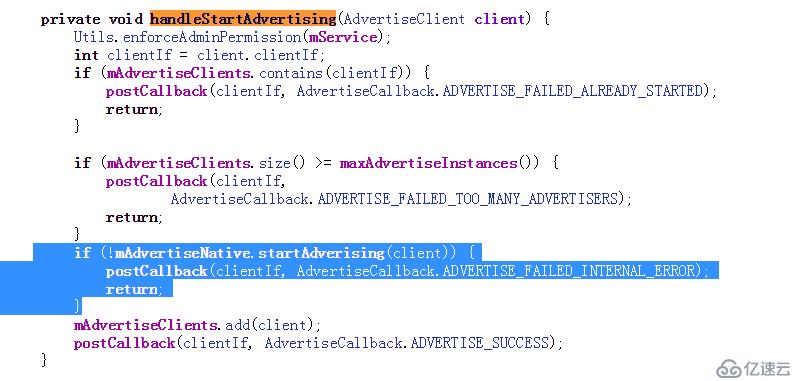
пҪң
и°ғз”ЁAdvertiseNativeж–№жі•пјҢжіЁж„ҸиҝҷдёӘзұ»жҳҜAdvertiseManagerзҡ„еҶ…йғЁзұ»

е…ҲзңӢеҚ•дёӘе№ҝж’ӯзҡ„ж–№жі•startSingleAdvertisingпјҡ

第дёҖжӯҘпјҢе…ҲдҪҝиғҪе№ҝж’ӯ гҖӮ
第дәҢжӯҘпјҢи®ҫзҪ®е№ҝж’ӯзҡ„ж•°жҚ® гҖӮ

зңӢзңӢJNIж–№жі•пјҢжіЁж„ҸжҳҜJNIпјҢдёҚжҳҜCгҖӮ

жіЁж„ҸдёҠйқўзҡ„JNIж–№жі•env->GetByteArrayElementsе’ҢReleaseByteArrayElementsпјҢиҺ·еҸ–数组然еҗҺеҸҲйҮҠж”ҫдәҶж•°з»„гҖӮжүҖд»Ҙдё»иҰҒзңӢsGattIf->client->set_adv_dataиҝҷдёӘж–№жі•
жҗңзҙўеҲ°иҝҷдёӘж–№жі•зҡ„е®ҡд№үзҡ„hж–Ү件пјҡ

йӮЈд№ҲsGattIfжҳҜд»Җд№ҲпјҢclientеҸҲжҳҜд»Җд№ҲпјҹиҝҷдёӘж–№жі•зҡ„е®һзҺ°еңЁе“ӘйҮҢе‘ўпјҹ
иҝҪжәҜsGattIf

иҝҪжәҜbtIf
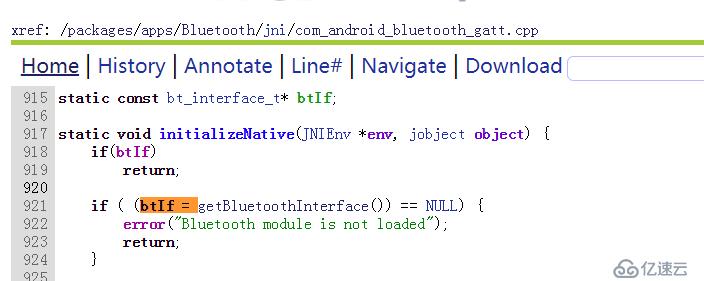
|

|
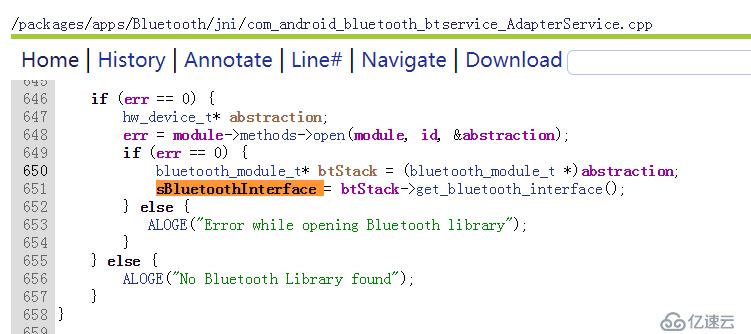
иҝҷдёӘж–№жі•жҳҜеңЁclassInitNativeж–№жі•йҮҢиў«и°ғз”Ёзҡ„

йӮЈд№ҲclassInitNativeиӮҜе®ҡжңүдёӘең°ж–№иў«з”ЁпјҢжҲ‘们жүҫжүҫпјҢжіЁж„ҸиҝҷжҳҜjniзұ»зҡ„ж–№жі•пјҢйӮЈд№Ҳе®ғиӮҜе®ҡжҳҜиҰҒиў«дёҠеұӮд»Јз ҒжүҖи°ғз”Ёзҡ„ пјҡ

пҪң

пҪң

еҸҜд»ҘеҸ‘зҺ°classInitNativeжӯЈеҘҪжҳҜGattServiceзҡ„жң¬ең°ж–№жі•пјҢ并且еңЁGattServiceзұ»еҠ иҪҪж—¶е°ұи°ғз”ЁдәҶгҖӮи§ӮеҜҹGattServiceе’Ңcom_android_bluetooth_btservice_AdapterService.cppдёӨдёӘзұ»пјҢ
еҸ‘зҺ°е®ғ们д№ҹжҳҜеңЁеҗҢдёҖдёӘеә”з”ЁдёӢгҖӮжүҖд»ҘдёҠйқўж–№жі•и°ғз”ЁжҺЁзҗҶжҳҜжІЎжңүжҜӣз—…зҡ„гҖӮ
жүҖд»ҘжҲ‘们жҺҘзқҖдёҠйқўзҡ„жәҗз ҒиҜҙиө·

дёҠйқўеј•з”Ёи°ғз”ЁеҚҒеҲҶеӨҚжқӮпјҡ
static void classInitNative(JNIEnv* env, jclass clazz) {
int err;
hw_module_t* module;
char value[PROPERTY_VALUE_MAX];
//д»Һй…ҚзҪ®ж–Ү件йҮҢиҺ·еҸ–key = "bluetooth.mock_stack"зҡ„еҖј
property_get("bluetooth.mock_stack", value, "");
//еҫ—еҲ°moduleзҡ„ID
const char *id = (strcmp(value, "1")? BT_STACK_MODULE_ID : BT_STACK_TEST_MODULE_ID);
//з»ҷmoduleиөӢеҖј
err = hw_get_module(id, (hw_module_t const**)&module);
if (err == 0) {
hw_device_t* abstraction;
err = module->methods->open(module, id, &abstraction);
if (err == 0) {
bluetooth_module_t* btStack = (bluetooth_module_t *)abstraction;
sBluetoothInterface = btStack->get_bluetooth_interface();
} else {
ALOGE("Error while opening Bluetooth library");
}
} else {
ALOGE("No Bluetooth Library found");
}
}дёҠйқўзҡ„hw_get_moduleе·Із»ҸеңЁе’Ң硬件жү“дәӨйҒ“дәҶ
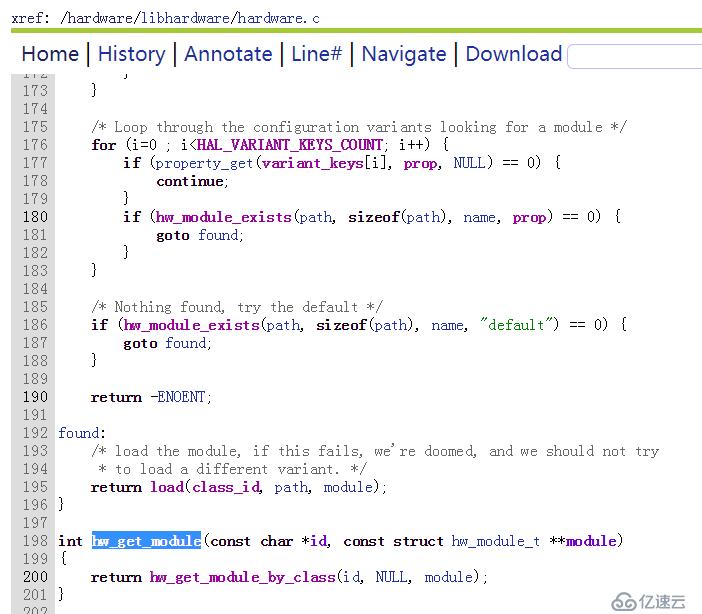
дёҠйқўж–№жі•зҡ„и°ғз”Ёе°ұдёҚеҺ»е…·дҪ“ж·ұ究дәҶпјҢдёӢйқўзңӢзңӢзңӢ sBluetoothInterfaceиҝҷдёӘеҸҳйҮҸзҡ„зұ»еһӢ

е®ғжҳҜbt_interface_tзҡ„жҢҮй’Ҳзұ»еһӢпјҢbt_interface_tзҡ„е®ҡд№үпјҡ
/** Represents the standard Bluetooth DM interface. */
typedef struct {
/** set to sizeof(bt_interface_t) */
size_t size;
/**
* Opens the interface and provides the callback routines
* to the implemenation of this interface.
*/
int (*init)(bt_callbacks_t* callbacks );
/** Enable Bluetooth. */
int (*enable)(void);
/** Disable Bluetooth. */
int (*disable)(void);
/** Closes the interface. */
void (*cleanup)(void);
/** Get all Bluetooth Adapter properties at init */
int (*get_adapter_properties)(void);
/** Get Bluetooth Adapter property of 'type' */
int (*get_adapter_property)(bt_property_type_t type);
/** Set Bluetooth Adapter property of 'type' */
/* Based on the type, val shall be one of
* bt_bdaddr_t or bt_bdname_t or bt_scanmode_t etc
*/
int (*set_adapter_property)(const bt_property_t *property);
/** Get all Remote Device properties */
int (*get_remote_device_properties)(bt_bdaddr_t *remote_addr);
/** Get Remote Device property of 'type' */
int (*get_remote_device_property)(bt_bdaddr_t *remote_addr,
bt_property_type_t type);
/** Set Remote Device property of 'type' */
int (*set_remote_device_property)(bt_bdaddr_t *remote_addr,
const bt_property_t *property);
/** Get Remote Device's service record for the given UUID */
int (*get_remote_service_record)(bt_bdaddr_t *remote_addr,
bt_uuid_t *uuid);
/** Start SDP to get remote services */
int (*get_remote_services)(bt_bdaddr_t *remote_addr);
/** Start Discovery */
int (*start_discovery)(void);
/** Cancel Discovery */
int (*cancel_discovery)(void);
/** Create Bluetooth Bonding */
int (*create_bond)(const bt_bdaddr_t *bd_addr, int transport);
/** Remove Bond */
int (*remove_bond)(const bt_bdaddr_t *bd_addr);
/** Cancel Bond */
int (*cancel_bond)(const bt_bdaddr_t *bd_addr);
/**
* Get the connection status for a given remote device.
* return value of 0 means the device is not connected,
* non-zero return status indicates an active connection.
*/
int (*get_connection_state)(const bt_bdaddr_t *bd_addr);
/** BT Legacy PinKey Reply */
/** If accept==FALSE, then pin_len and pin_code shall be 0x0 */
int (*pin_reply)(const bt_bdaddr_t *bd_addr, uint8_t accept,
uint8_t pin_len, bt_pin_code_t *pin_code);
/** BT SSP Reply - Just Works, Numeric Comparison and Passkey
* passkey shall be zero for BT_SSP_VARIANT_PASSKEY_COMPARISON &
* BT_SSP_VARIANT_CONSENT
* For BT_SSP_VARIANT_PASSKEY_ENTRY, if accept==FALSE, then passkey
* shall be zero */
int (*ssp_reply)(const bt_bdaddr_t *bd_addr, bt_ssp_variant_t variant,
uint8_t accept, uint32_t passkey);
/** Get Bluetooth profile interface */
const void* (*get_profile_interface) (const char *profile_id);
/** Bluetooth Test Mode APIs - Bluetooth must be enabled for these APIs */
/* Configure DUT Mode - Use this mode to enter/exit DUT mode */
int (*dut_mode_configure)(uint8_t enable);
/* Send any test HCI (vendor-specific) command to the controller. Must be in DUT Mode */
int (*dut_mode_send)(uint16_t opcode, uint8_t *buf, uint8_t len);
/** BLE Test Mode APIs */
/* opcode MUST be one of: LE_Receiver_Test, LE_Transmitter_Test, LE_Test_End */
int (*le_test_mode)(uint16_t opcode, uint8_t *buf, uint8_t len);
/* enable or disable bluetooth HCI snoop log */
int (*config_hci_snoop_log)(uint8_t enable);
/** Sets the OS call-out functions that bluedroid needs for alarms and wake locks.
* This should be called immediately after a successful |init|.
*/
int (*set_os_callouts)(bt_os_callouts_t *callouts);
/** Read Energy info details - return value indicates BT_STATUS_SUCCESS or BT_STATUS_NOT_READY
* Success indicates that the VSC command was sent to controller
*/
int (*read_energy_info)();
/**
* Native support for dumpsys function
* Function is synchronous and |fd| is owned by caller.
*/
void (*dump)(int fd);
/**
* Clear /data/misc/bt_config.conf and erase all stored connections
*/
int (*config_clear)(void);
} bt_interface_t; еҸҜд»ҘзҹҘйҒ“bt_interface_tжҳҜдёӘз»“жһ„дҪ“зұ»еһӢ
е…¶е®һеҗ§пјҢжәҗз ҒзңӢеҲ°иҝҷе„ҝжҲ‘еҸҲиө°еҒҸдәҶпјҢжҲ‘们主иҰҒжҳҜеҲҶжһҗset_adv_dataжҳҜз”ұйӮЈдёӘзұ»е®һзҺ°зҡ„
жҗңзҙўиҝҷдёӘж–№жі•зҡ„и°ғз”ЁжҳҜеҫҲз»•зҡ„

еҸӘиғҪжҗңзҙўдёҖдёӘbt_gatt_client.hж–Ү件пјҢйӮЈд№Ҳ继з»ӯжҗңзҙўbt_gatt_client.hж–Ү件
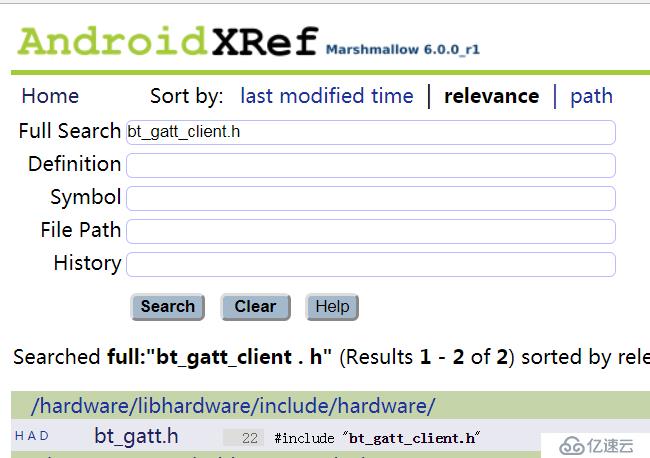
继з»ӯжҗңзҙўbt_gatt.hж–Ү件
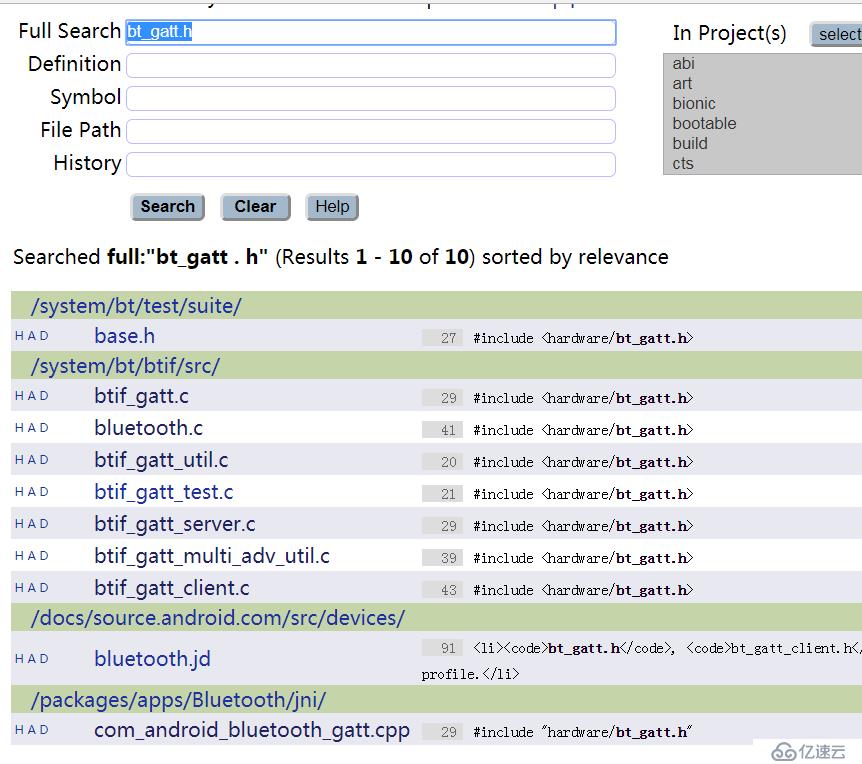
然еҗҺдёҖдёӘдёҖдёӘж–Ү件зӮ№иҝӣеҺ»жҗңзҙўset_adv_dataж–№жі•пјҢеҸ‘зҺ°еҸӘжңү/system/bt/btif/src/btif_gatt_client.cиҝҷдёӘзұ»йҮҢеҢ…ж¶өиҝҷдёӘж–№жі•пјҢдҪҶжҳҜеҗҚеӯ—дёҚжҳҜе®Ңе…ЁдёҖжЁЎдёҖж ·гҖӮ
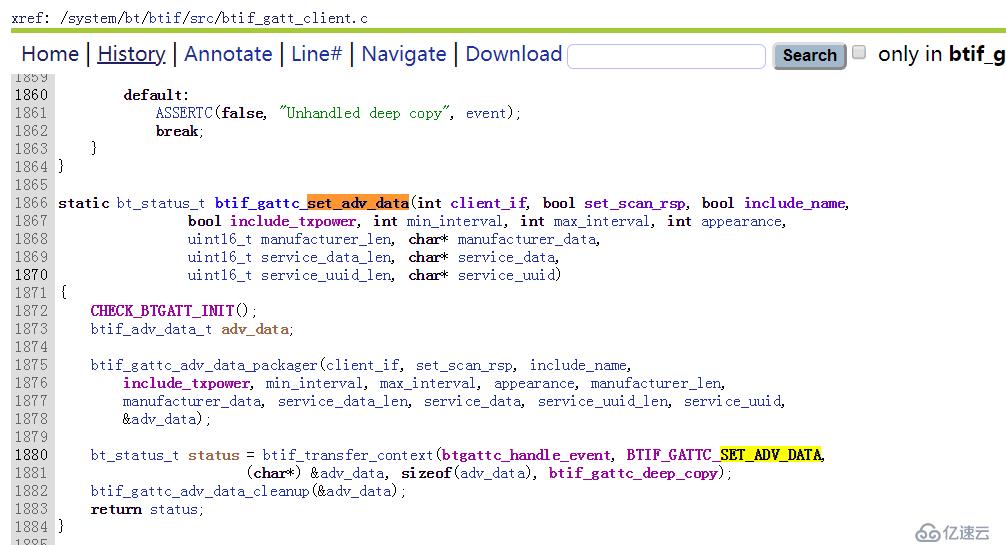
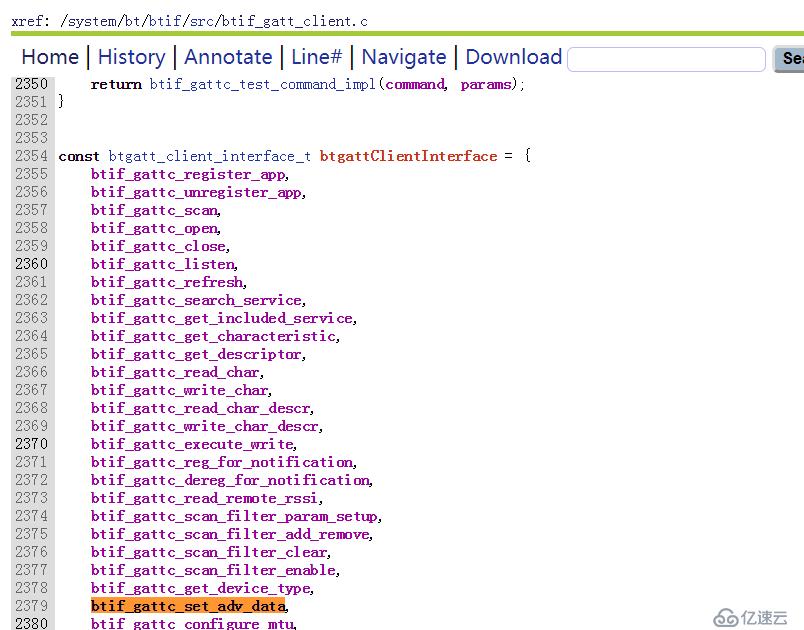
йӮЈд№ҲиҝҷдёӘжЁЎеқ—жҳҜжҖҺд№Ҳе’ҢеӨ–йғЁжЁЎеқ—е»әз«Ӣе…іиҒ”зҡ„пјҹз”Ёзҡ„д»Җд№ҲжңәеҲ¶пјҹ
жҗңзҙўbtgattClientInterfaceиҝҷдёӘеҸҳйҮҸ

пҪң

жҗңзҙўbtif_gatt_get_interfaceж–№жі•
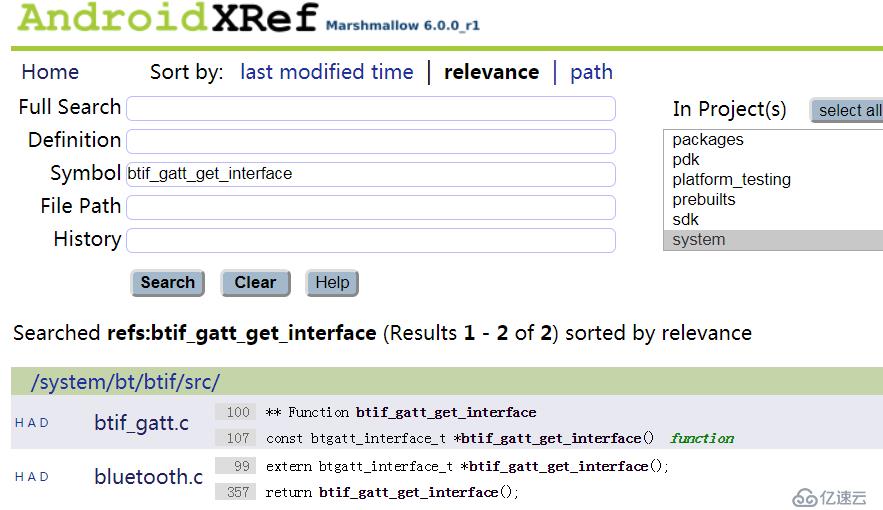
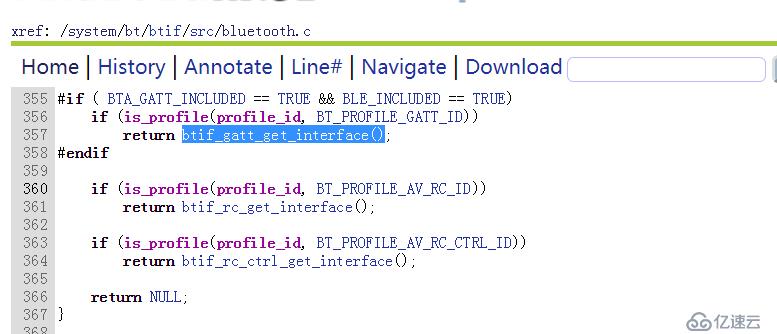
зңӢзңӢи°ғз”Ёзҡ„ж–№жі•:

иҝҷдёӘеҘҪеғҸе°ұжҳҜи“қзүҷжһ¶жһ„йҮҢзҡ„ProfileеұӮпјҹпјҹ
еңЁbluetooth.cеҸҲе°ҶдёҠйқўзҡ„get_profile_interfaceе°ҒиЈ…еҲ°bluetoothInterface
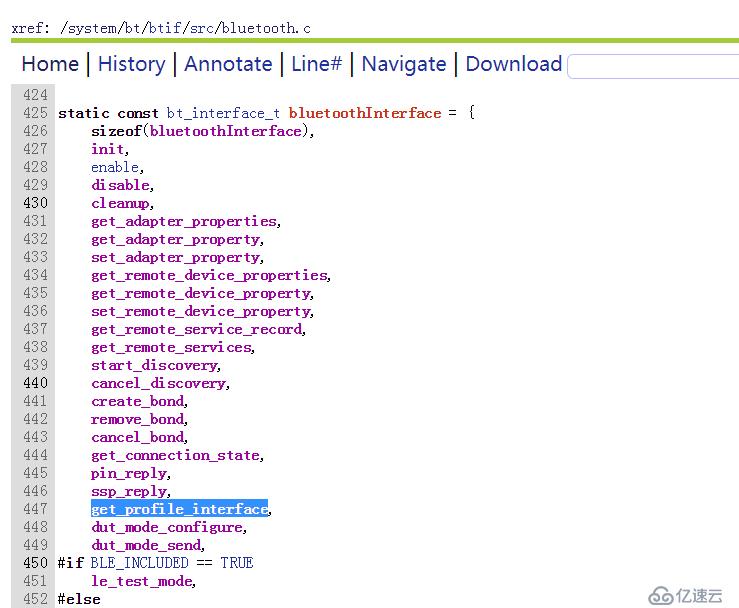
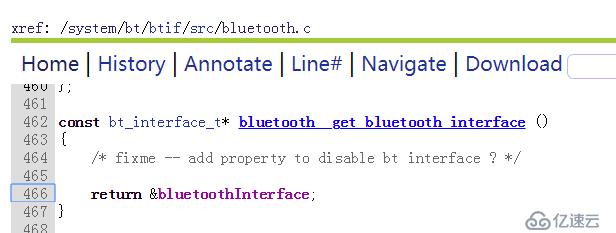
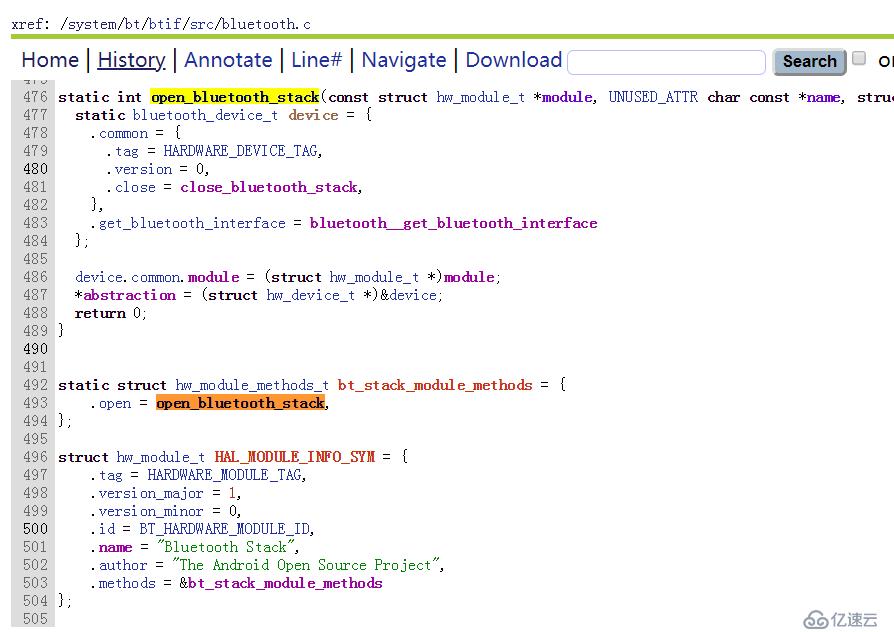 пҪң
пҪң
зңӢзңӢid 
иҝҷдёҚжӯЈжҳҜжү“ејҖи“қзүҷж Ҳеҗ—пјҹдҪҶжҳҜжӯ»жҙ»жІЎжңүжҗңзҙўеҲ°HAL_MODULE_INFO_SYMеңЁе“ӘйҮҢиў«и°ғз”ЁгҖӮ
зңӢдәҶиҝҷдёӘеҚҡе®ўhttps://blog.csdn.net/myarrow/article/details/7175204пјҢеә”иҜҘе°ұиғҪжҳҺзҷҪгҖӮHALеҰӮдҪ•еҗ‘дёҠеұӮжҸҗдҫӣжҺҘеҸЈ
еӣһйЎҫеүҚйқўзҡ„жәҗз Ғ
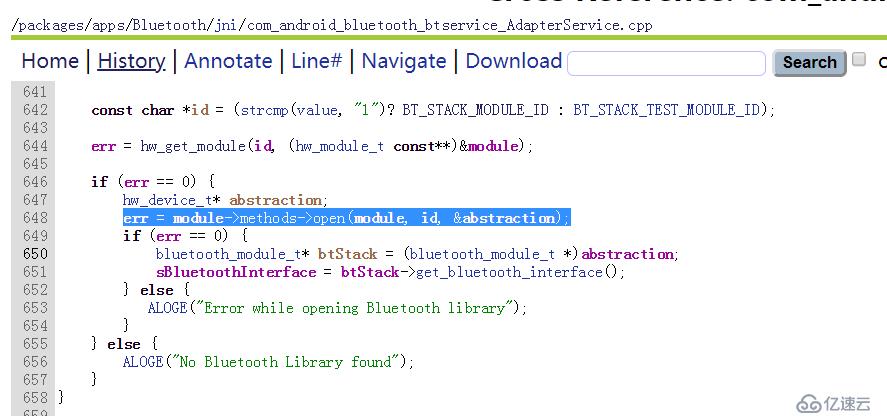
зңӢзңӢid 
2дёӘmoduleзҡ„idдёҖжЁЎдёҖж ·пјҢиҝҷдёҚжӯЈеҘҪдёҺдёҠйқўзҡ„HAL_MODULE_INFO_SYMиҝҷдёӘModuleдёҚи°ӢиҖҢеҗҲпјҹпјҹпјҹпјҹпјҹпјҹMDпјҢеҲҶжһҗжәҗз ҒпјҢз»ҲдәҺжңүдёҖж¬ЎеҗҲдёҠдәҶгҖӮ
иҮіжӯӨпјҢжҲ‘们жүҫеҲ°дәҶж–№жі•зҡ„и°ғз”Ёж ҲпјҢдҪҶиҝҷдёҚжҳҜжҲ‘зҡ„зӣ®зҡ„гҖӮжҲ‘зҡ„зӣ®зҡ„пјҢиҝҳеңЁset_adv_dataйӮЈйҮҢгҖӮжүҖд»Ҙ继з»ӯеүҚйқўзҡ„жәҗз ҒжҺҘзқҖиҜҙпјҡ

第1жӯҘпјҡжү“еҢ…ж•°жҚ®
е°ұжҳҜжҠҠж•°жҚ®е°ҒиЈ…еҲ°adv_dataиҝҷдёӘеҸҳйҮҸйҮҢгҖӮ
(client_ifbool set_scan_rspbool include_namebool include_txpowermin_intervalmax_intervalappearancemanufacturer_len* manufacturer_dataservice_data_len* service_dataservice_uuid_len* service_uuidbtif_adv_data_t *p_multi_adv_inst)
{
memset(p_multi_adv_instsizeof(btif_adv_data_t))p_multi_adv_inst->= (uint8_t) p_multi_adv_inst->= p_multi_adv_inst->= p_multi_adv_inst->= p_multi_adv_inst->= p_multi_adv_inst->= p_multi_adv_inst->= p_multi_adv_inst->= (manufacturer_len > )
{
p_multi_adv_inst->p_manufacturer_data = GKI_getbuf()memcpy(p_multi_adv_inst->p_manufacturer_datamanufacturer_datamanufacturer_len)}
p_multi_adv_inst->= (service_data_len > )
{
p_multi_adv_inst->p_service_data = GKI_getbuf()memcpy(p_multi_adv_inst->p_service_dataservice_dataservice_data_len)}
p_multi_adv_inst->= (service_uuid_len > )
{
p_multi_adv_inst->p_service_uuid = GKI_getbuf()memcpy(p_multi_adv_inst->p_service_uuidservice_uuidservice_uuid_len)}
}第2жӯҘпјҡж Үйўҳеҫ…е®ҡ

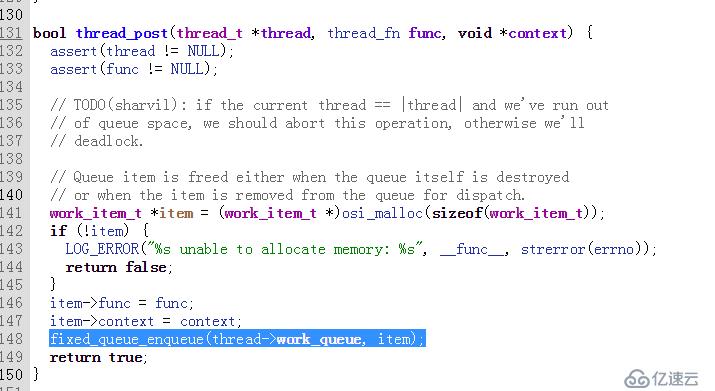
fixed_queue_enqueueжҳҜдёҚжҳҜдјјжӣҫзӣёиҜҶ
еҲҶжһҗдёҠйқўзҡ„еӣһи°ғж–№жі•еә”иҜҘжҳҜпјҡ
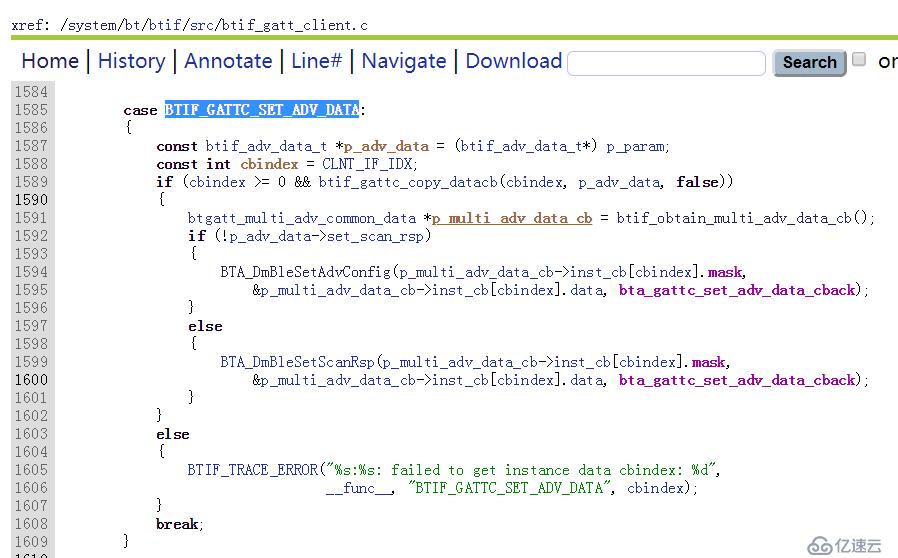


еҸҜзҹҘж•°жҚ®еҸҲеҸ‘з»ҷдәҶbtaжЁЎеқ—
дҪҶжҳҜbtaеҸҲжҳҜеңЁе“ӘйҮҢжҺҘеҸ—иҝҷдёӘж¶ҲжҒҜзҡ„е‘ўпјҹ
жҗңзҙўBTA_DM_API_BLE_SET_ADV_CONFIG_EVT

жҗңзҙўbta_dm_ble_set_adv_config

пҪң
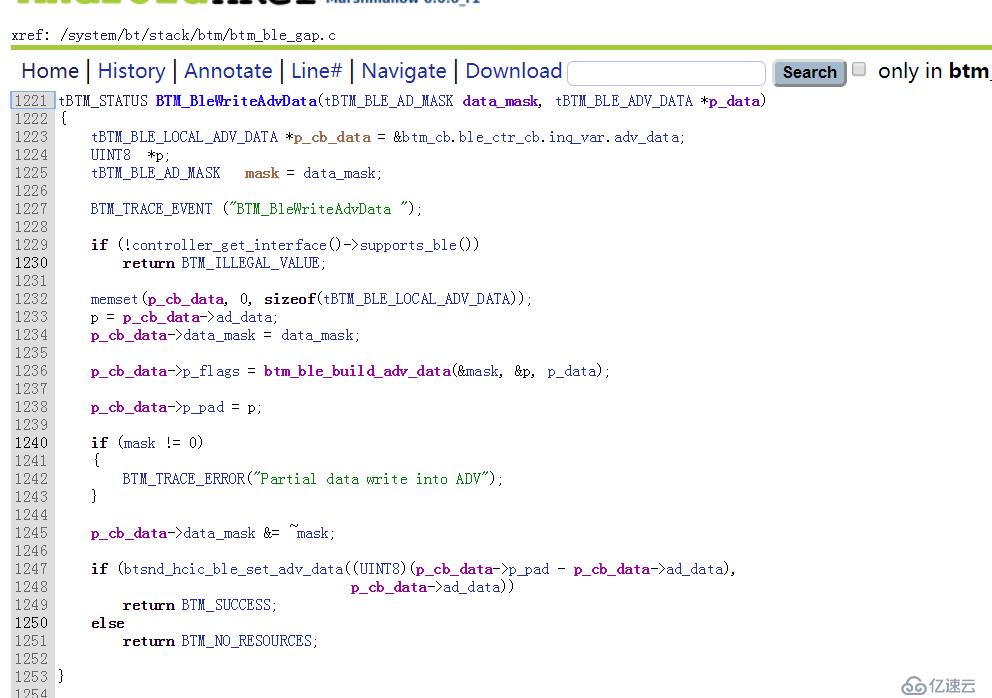
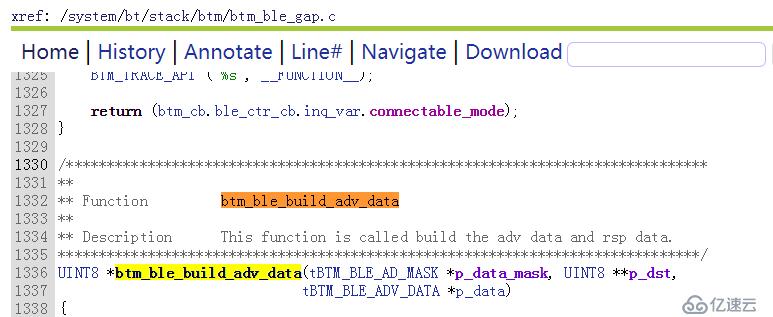
иҝҷдёӘж–№жі•жҳҜзӣёеҪ“зҡ„й•ҝе•ҠпјҢиҝҷдёӘжҳҜз»„е№ҝж’ӯзҡ„ж–№жі•еҸҜд»ҘзЎ®и®Өж— з–‘дәҶгҖӮ
еҶҚзңӢзңӢеҸ‘йҖҒ
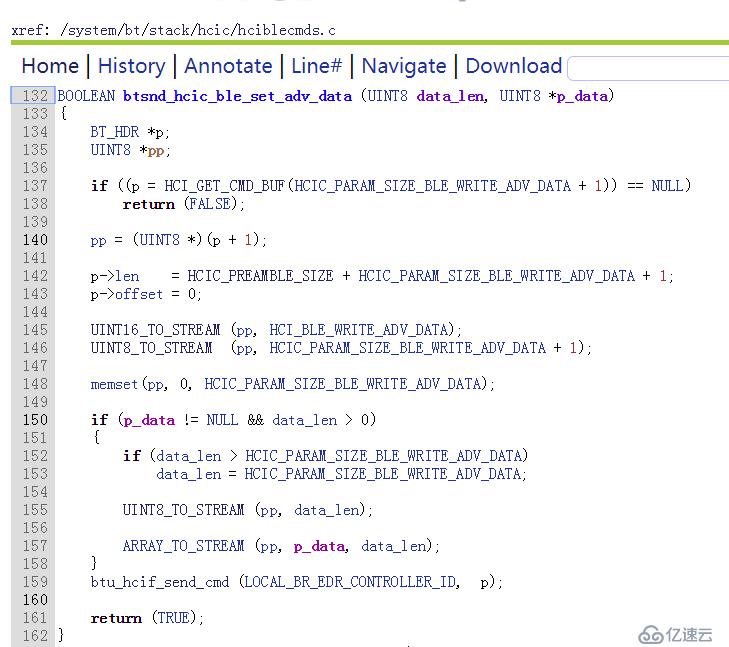
зңӢзңӢдёӢйқўиҝҷдёӘж–№жі•зҡ„жіЁйҮҠпјҢеҸ‘йҖҒе‘Ҫд»Өз»ҷдё»жңәжҺ§еҲ¶еҷЁгҖӮ
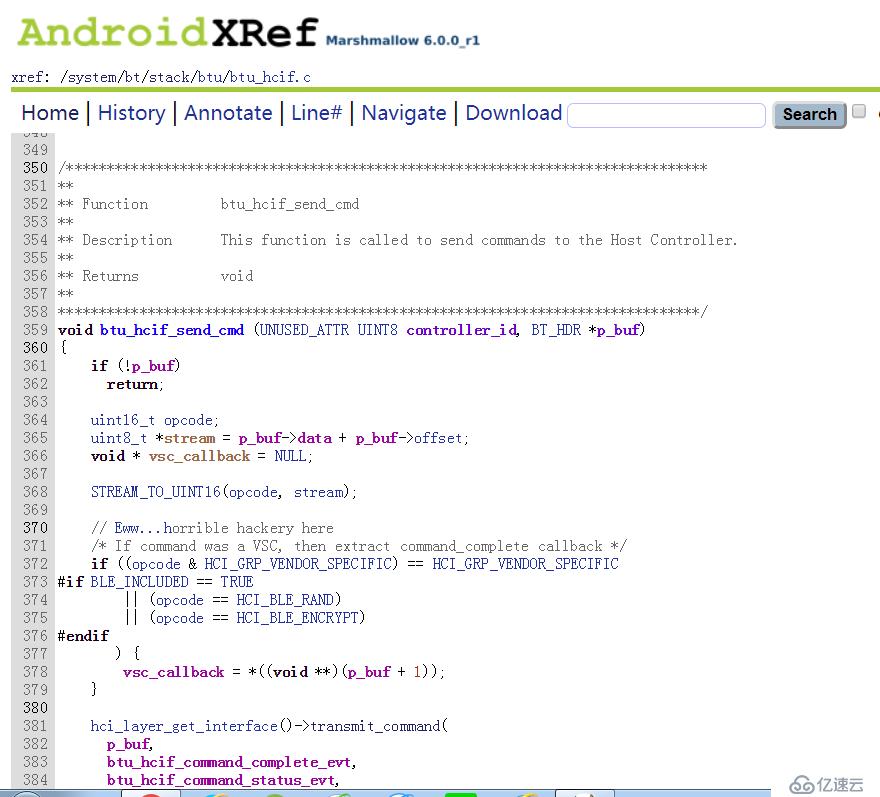
е…¶е®һеҲ°иҝҷйҮҢпјҢе№ҝж’ӯеҢ…зҡ„ж•°жҚ®е·Із»ҸжӢјз»„е®ҢжҲҗдәҶгҖӮжҲ‘们е°ұжІЎжңүеҝ…иҰҒеҫҖдёӢж·ұ究е®ғжҖҺд№ҲеҸ‘еҮәеҺ»дәҶгҖӮ
е…ҚиҙЈеЈ°жҳҺпјҡжң¬з«ҷеҸ‘еёғзҡ„еҶ…е®№пјҲеӣҫзүҮгҖҒи§Ҷйў‘е’Ңж–Үеӯ—пјүд»ҘеҺҹеҲӣгҖҒиҪ¬иҪҪе’ҢеҲҶдә«дёәдё»пјҢж–Үз« и§ӮзӮ№дёҚд»ЈиЎЁжң¬зҪ‘з«ҷз«ӢеңәпјҢеҰӮжһңж¶үеҸҠдҫөжқғиҜ·иҒ”зі»з«ҷй•ҝйӮ®з®ұпјҡis@yisu.comиҝӣиЎҢдёҫжҠҘпјҢ并жҸҗдҫӣзӣёе…іиҜҒжҚ®пјҢдёҖз»ҸжҹҘе®һпјҢе°Ҷз«ӢеҲ»еҲ йҷӨж¶үе«ҢдҫөжқғеҶ…е®№гҖӮ
жӮЁеҘҪпјҢзҷ»еҪ•еҗҺжүҚиғҪдёӢи®ўеҚ•е“ҰпјҒ